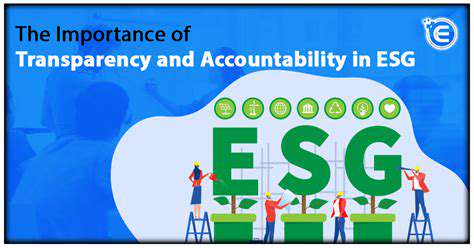Ethical Metaverse Development for Entertainment
Addressing Representation and Inclusivity in Virtual Worlds
Defining Representation in Virtual Worlds
Virtual representation goes far beyond superficial avatar customization. True digital inclusion requires embedding diverse cultural narratives, behavioral patterns, and identity expressions into the metaverse's DNA. This means creating systems that authentically reflect humanity's spectrum - from racial identities to neurodiverse cognitive styles. The most immersive virtual environments don't just show diversity; they enable different lived experiences through nuanced interaction mechanics and environmental storytelling.
The Importance of Diverse Perspectives in Design
Building equitable virtual spaces demands radical collaboration with marginalized communities. Developers must move beyond token consultations to establish ongoing design partnerships with disability advocates, cultural specialists, and social scientists. For instance, working with occupational therapists can reveal accessibility needs that able-bodied designers might overlook. These collaborations should occur throughout the development lifecycle, from initial concepting to post-launch updates.
Addressing Historical and Societal Biases
Even well-intentioned virtual worlds often replicate real-world inequalities through subtle design choices. Default avatar proportions frequently reflect Western beauty standards, while interaction systems privilege certain communication styles over others. Combatting this requires implementing bias audits at multiple development stages, using tools like algorithmic fairness checkers and cultural sensitivity panels. Language systems should accommodate regional dialects and non-verbal communication preferences.
Promoting Inclusive Interactions and Experiences
Inclusion extends beyond representation to interaction design. Spatial audio should accommodate hearing aids, while movement systems must consider mobility limitations. Proactive moderation tools can maintain safe spaces without heavy-handed censorship - think AI that detects microaggressions or systems that let users customize their social boundaries. Environmental design should include quiet spaces for neurodiverse users alongside vibrant social hubs.
The Role of User Feedback and Community Engagement
Sustainable inclusion requires establishing permanent feedback infrastructure. This means going beyond basic surveys to create:
- Community design councils with rotating membership
- Real-time sentiment analysis tools
- Anonymous reporting systems for exclusionary experiences
The most successful virtual worlds treat users as co-creators rather than passive consumers.
Ensuring Ethical Development Practices
Ethical metaverse development needs enforceable accountability frameworks. This includes:
- Public diversity metrics for development teams
- Third-party accessibility certifications
- Transparent bias mitigation reports
Developers should publish annual inclusion impact statements detailing both successes and ongoing challenges. Data collection practices must respect cultural differences in privacy expectations while still gathering necessary feedback.
Promoting Responsible Consumption and Addressing Potential Addiction
Understanding the Urge to Consume
Modern consumption patterns stem from deep psychological drivers. The metaverse amplifies these through endless customization options and social comparison triggers. Designers must recognize how virtual economies exploit variable reward schedules - the same psychological mechanism that makes slot machines addictive. Ethical design should provide fulfillment without creating dependency loops.
Identifying Potential Triggers
Common metaverse consumption triggers include:
- Social status anxiety (e.g., premium avatar items)
- Fear of missing out (time-limited events)
- Completion compulsions (collection systems)
Developers can implement cooling-off periods for major purchases and visual indicators showing spending patterns over time. Early warning systems could detect problematic usage patterns before they escalate.
Promoting Mindful Consumption
Mindfulness features might include:
- Purchase confirmation screens showing real-world cost equivalents
- Environmental impact visualizations for virtual goods
- Usage dashboards tracking time spent across activities
The most ethical platforms build reflection moments into natural usage breaks rather than burying them in settings menus.
Developing Healthy Coping Mechanisms
Virtual worlds should actively promote balanced engagement through:
- Integrated wellness activities (guided meditation spaces)
- Activity scheduling tools
- Social connection features that don't require spending
Reward systems should celebrate disconnection as much as engagement. For example, offering benefits for taking scheduled breaks.
Addressing Addiction and Seeking Support
Comprehensive support systems require:
- In-platform access to counseling services
- Peer support communities
- Gradual step-down programs (not abrupt bans)
The most effective interventions meet users where they are - including within the virtual environments where issues manifest. Crisis support should be accessible without requiring someone to fully log out.
Read more about Ethical Metaverse Development for Entertainment
Hot Recommendations
- Immersive Culinary Arts: Exploring Digital Flavors
- The Business of Fan Funded Projects in Entertainment
- Real Time AI Powered Dialogue Generation in Games
- Legal Challenges in User Generated Content Disclaimers
- Fan Fiction to Screenplays: User Driven Adaptation
- The Evolution of User Driven Media into Global Entertainment
- The Ethics of AI in Copyright Protection
- Building Immersive Narratives for Corporate Training
- The Impact of AI on Music Discovery Platforms
- AI for Audience Analytics and Personalized Content











